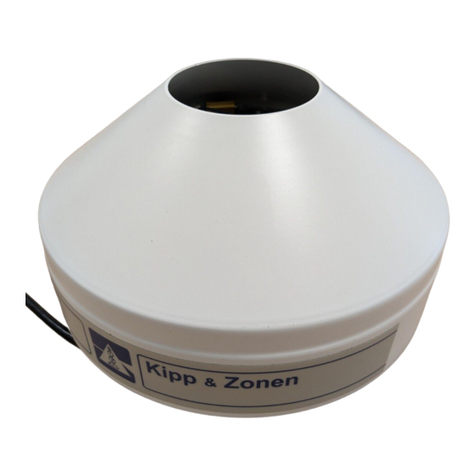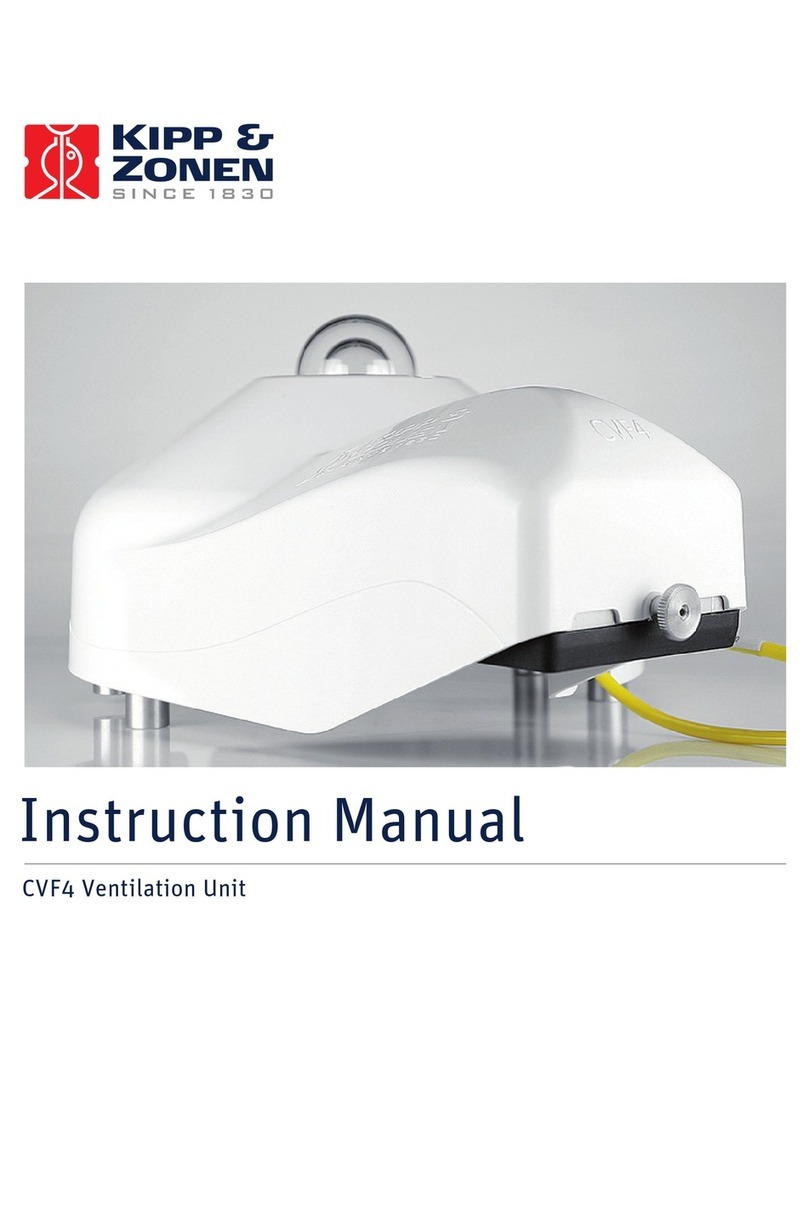4
2. Introduction
This manual will show you how to install, use and maintain the CVF4 Ventilation Unit. The CVF4 is meant for
ventilating solar radiation sensors with the purpose to keep the mounted radiometer window or dome clean
from dew, precipitation and pollution. It can be used outdoors under all-weather conditions. The CVF4 has a
built in heater to keep the air just above ambient temperature.
Reading this entire manual is recommended for a full understanding of this product..
The triangle with exclamation mark is intended to alert the user to the presence of important
installation, operating and maintenance instructions in the literature accompanying the
instrument.
This electrical equipment should only be serviced by authorized personnel, meaning people who
have been trained and designated as “authorized” by their employers.
Note Useful information for the user
Both the World Meteorological Organisation (WMO) and the Baseline Surface Radiation Network (BSRN)
guidelines advise using a ventilator to optimise the performance of radiometers in general.
The use of the CVF4 will:
•Increase the maintenance interval.
•Increase the accuracy of the measured data (cleaner dome / window)
•Reduce the zero offset of the radiometer.
The CVF4 is meant for all CM, CMP, SMP, CG, CGR and CUV radiometers. However with the CMP3 and SMP3
and CGR3 the ventilation effect will be less due to the larger opening around the dome. The CVF4 is meant to
run continuously. The heater can either be switched on permanently for cold regions or be switched by a
data logger or clock to remove dew in the morning and be switched off afterwards. In that case the heater is
operated from a 2 hours before sunrise to an hour after sunrise. This saves power in situations where power
is limited such as PV operated sites.
This manual, together with the instruction sheet, gives information related to installation, maintenance,
product specifications and troubleshooting of the CVF4.
If any questions should remain, please feel free to contact your Kipp & Zonen dealer or e-mail:
For information about other Kipp & Zonen products or to check for any update of this manual, go to
www.kippzonen.com .
2.1. Safety precautions
Many hazards are associated with installing and maintaining instruments on towers or elevated structures.
It is advised to use qualified personnel for installation and maintenance. The client is responsible for
following the local safety regulations.
The use of appropriate equipment and safety practices is mandatory. Check your company's safety
procedure and protective equipment prior to performing any work. ) If the DustIQ is mounted at a high
position, special care must be taken to secure both the person installing it and the instrument from falling
during installation.





























